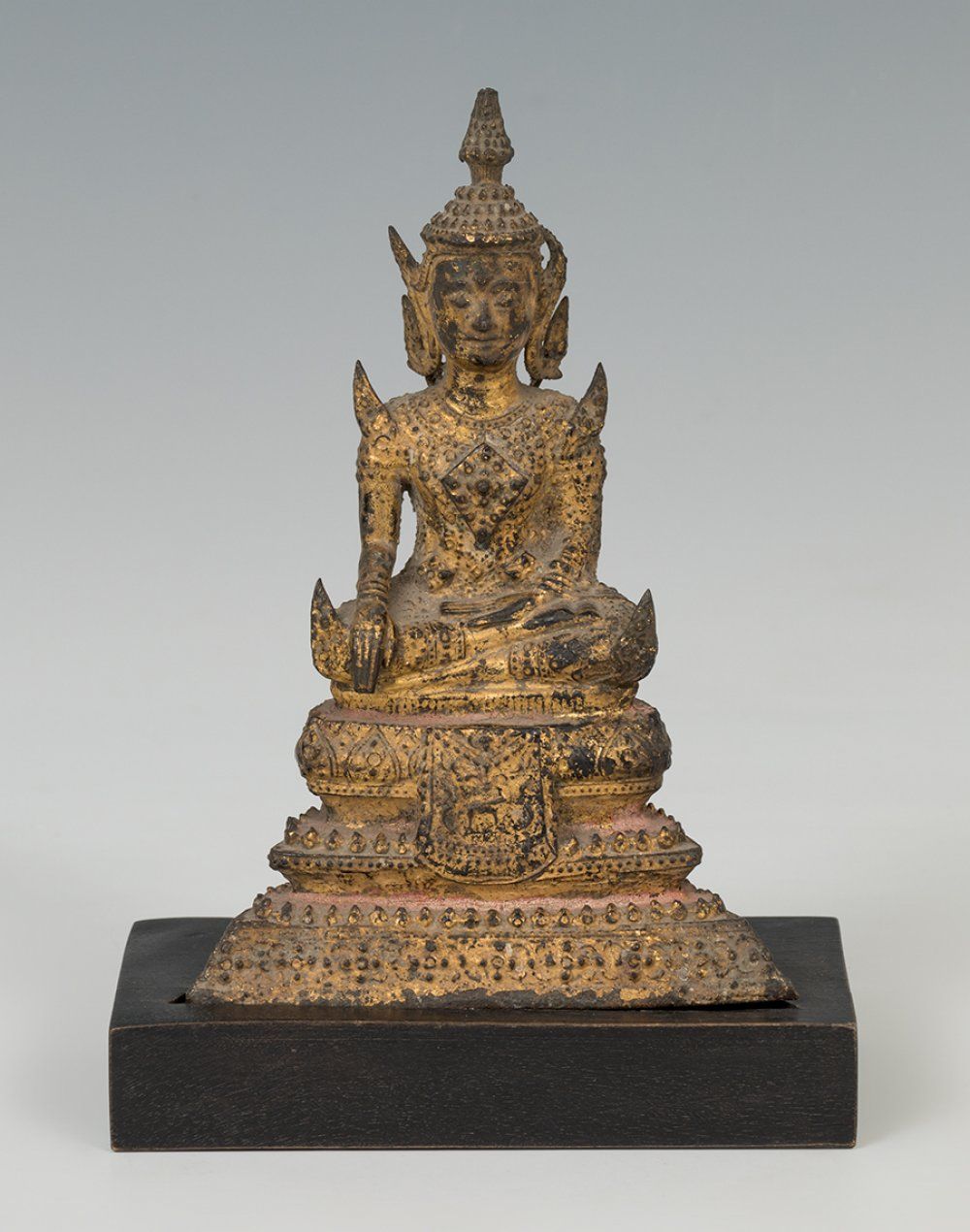Description
Buddha; Thailand; 18th century. Gilt bronze. Some wear to the gilding. Measurements: 17,5 x 12 x 6 cm; 3 x 15 x 8 cm (base). Round sculpture showing the figure of a Buddha seated on a large altar. He is in the lotus position. With his hands he performs the bhumi sparsa mudra, or gesture of touching the earth, which represents the Buddha taking the earth as his witness. It represents the moment when Buddha solved the problem of ending suffering when he was under the tree in Bodh-Gaya. It is usually depicted in the images of the historical Buddha (Sakyamuni) and Asobhya, with the figure seated in the lotus position. The right hand touches the ground with the index finger near the right knee, and the left hand is usually shown resting on the leg, palm upwards. Buddha attained the ultimate evolutionary perfection, turning suffering into happiness for all living beings. Born around 560 BC, his father was a raja who ruled the north-eastern province of India. At the age of 29, the young prince gave up his life of luxury, as he felt compelled to purify his body and turn it into an instrument of the mind by ridding it of earthly temptations. Here his head is crowned with a headdress depicting the Buddha, representing infinite wisdom. The elegance and spirituality of Buddha's form is well conceived in this representation.
96
Buddha; Thailand; 18th century. Gilt bronze. Some wear to the gilding. Measurements: 17,5 x 12 x 6 cm; 3 x 15 x 8 cm (base). Round sculpture showing the figure of a Buddha seated on a large altar. He is in the lotus position. With his hands he performs the bhumi sparsa mudra, or gesture of touching the earth, which represents the Buddha taking the earth as his witness. It represents the moment when Buddha solved the problem of ending suffering when he was under the tree in Bodh-Gaya. It is usually depicted in the images of the historical Buddha (Sakyamuni) and Asobhya, with the figure seated in the lotus position. The right hand touches the ground with the index finger near the right knee, and the left hand is usually shown resting on the leg, palm upwards. Buddha attained the ultimate evolutionary perfection, turning suffering into happiness for all living beings. Born around 560 BC, his father was a raja who ruled the north-eastern province of India. At the age of 29, the young prince gave up his life of luxury, as he felt compelled to purify his body and turn it into an instrument of the mind by ridding it of earthly temptations. Here his head is crowned with a headdress depicting the Buddha, representing infinite wisdom. The elegance and spirituality of Buddha's form is well conceived in this representation.
